Called the “Architect of the Devil,” Albert Speer was Hitler’s right hand-man for architecture. Together they projected a new Berlin for the Third Reich.

source:https://commons.wikimedia.org/wiki/File:Bundesarchiv_Bild_146-1979-026-22,_Adolf_Hitler_verleiht_Albert_Speer_Fritz-Todt-Ring.jpg
About His Life
Albert Speer was a German politician, architect (1933-1945) and Minister for Armaments and war production(1942-1945).
He was born in Mannheim in 1905 and died in 1981 in London.
At Nurnberg Trials in 1945-1946 Speer was condemned for 20 years but he revealed that he didn’t know about the plan to exterminate Jews.
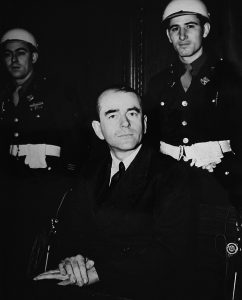
Image source:https://en.wikipedia.org/wiki/Albert_Speer
Entry into the Nazi Party
Speer studied architecture in Munich and graduated from Berlin University in 1927, at the age of 20. After hearing Hitler’s speeches in 1930, he joined the Nazi Party with enthusiasm. Then, in 1933, when Hitler became chancellor of Germany, Speer was his personal architect, winning his trust and friendship thanks to his talent and efficiency. In 1942, Speer became Minister of Armament and Munitions and then Minister of War Production.
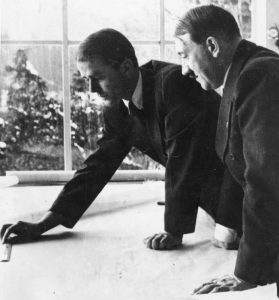
Image source:https://en.wikipedia.org/wiki/Albert_Speer
His Major Works
Speer became the chief architect of the Third Reich, and he designed the Nuremberg Stadium for 40,000 people.
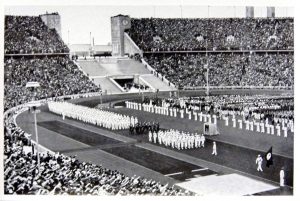
Image source: https://www.flickr.com/photos/51764518@N02/11389081664
Author: Joe Haupt

Image source:https://commons.wikimedia.org/wiki/File:Bundesarchiv_Bild_183-G00825,_Berlin,_Olympiade,_Siegerehrung_F%C3%BCnfkampf.jpg
After 1936, he created many projects in Berlin to make the city the actual capital of the raising Reich. There, he built wide areas with wide and classic streets and buildings. Due to Speer’s Hellenistic ideals of magnitude and greatness, he adapted these principles to fit the spirit of the Reich. The most famous opera of his work, was the new Chancellery completed in 1939. Later, it was destroyed under the Allies’ bombings.
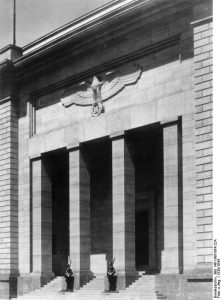
Image source:https://commons.wikimedia.org/wiki/File:Bundesarchiv_Bild_146-1985-064-22A,_Berlin,_Neue_Reichskanzlei,_Mittelbau.jpg
War Production
In 1941, Speer’s architectural work stopped because of the War, but he became a Minister of Armament. He was appreciated for his competence to manage the production. Additionally, he exploited the prisoners of the concentration camps because he considered men to be tools, useful only to develop line production.
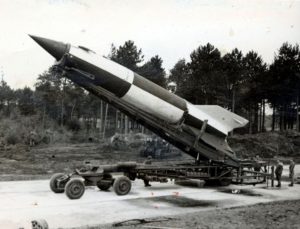
Image source: https://commons.wikimedia.org/wiki/File:V2_suziria.jpg
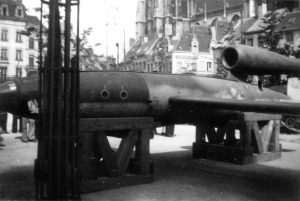
Image source:https://commons.wikimedia.org/wiki/File:Antwerp_V-1.jpg
Info sources:
https://www.britannica.com/biography/Albert-Speer
https://www.thenewatlantis.com/publications/the-architecture-of-evil
